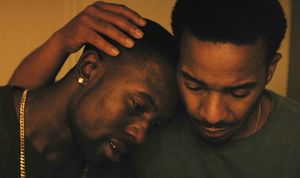Lighting for Video
Introduction
Everything we do with cameras and lenses is about capturing light. A scene may be lit with available light--using natural or man-made light that is already at the location--or with lighting the the filmmaker controls. The way a scene is lit influences both how we understand the scene and how we experience it emotionally. Light directs the viewer's attention. It provides cues, creates depth, surface texture, or can flatten, compress, and smooth over features. Quality of light has a powerful effect on the mood of a scene.
Light
To start to understand light, look at a painting, photograph, or scene in a movie and ask yourself:
- What kind of shadow does it cast (crisp or diffuse)?
- What angle is it coming from?
- How bright is it (intensity)?
- How bright is it relative to other lights (lighting contrast)?
- What color is it?
When you are ready to shoot ask yourself the same questions.
Qualities of Light
The hardness of light is a way to describe the type of shadow it casts. Hard Light, also called specular light, is made up of parallel rays that produce clean, hard shadows that outline the shapes of objects. Hard light is crisp and can feel harsh.
Soft, or diffuse, light is less directional. It's comprised of rays of light going in many different directions and produces gentler shadows.
- Hard light can be produced artificially with lensed or focused lamps that emit a clearly directed beam.
- Soft light sources produce a broad and even glow, not a beam of light. Soft sources are often indirect.
Directionality
Light coming from the general direction of the camera is called a front light. Front axial light comes from very near the camera's lens, where most of its shadows are mostly not visible from the camera position.



